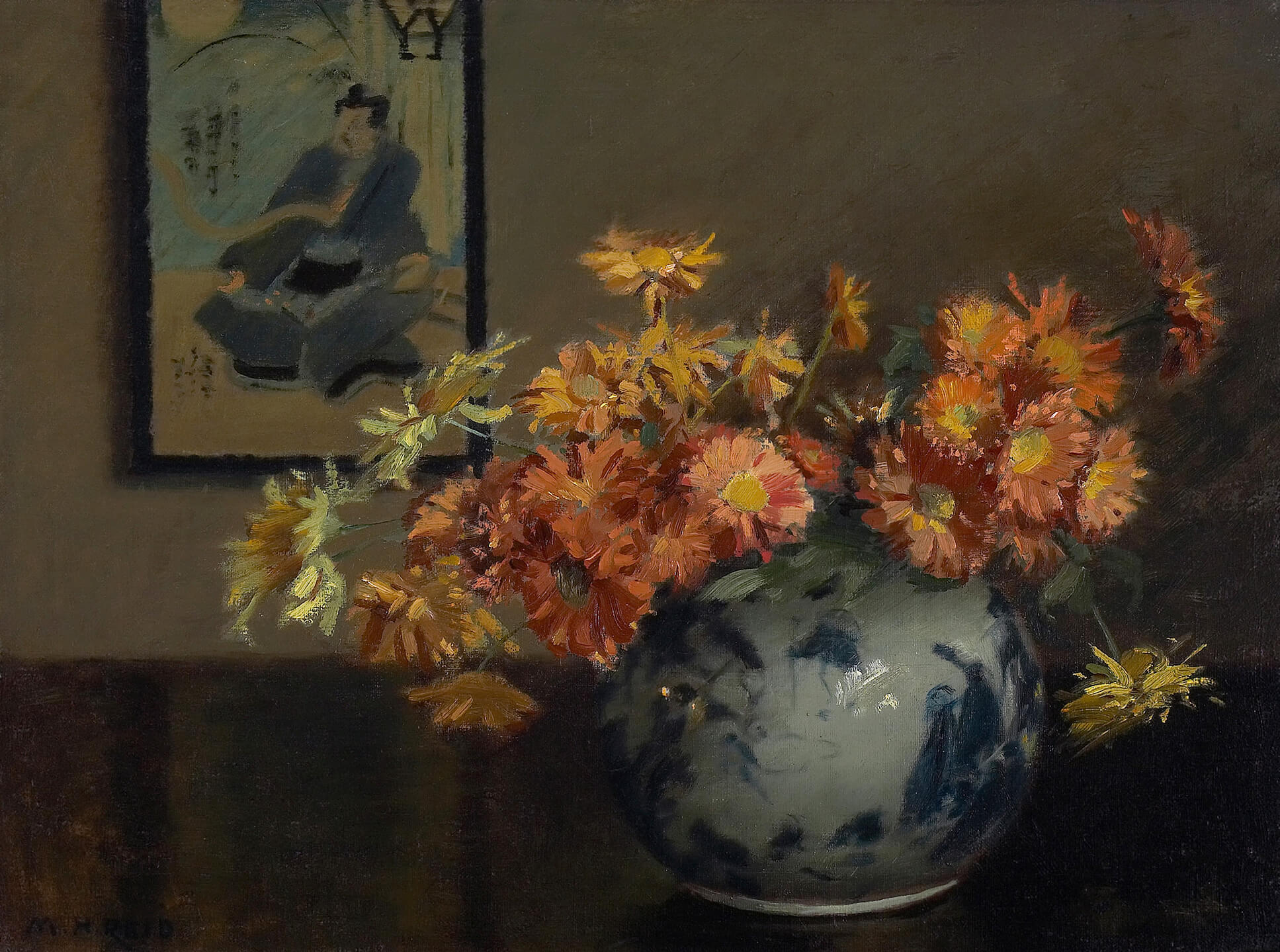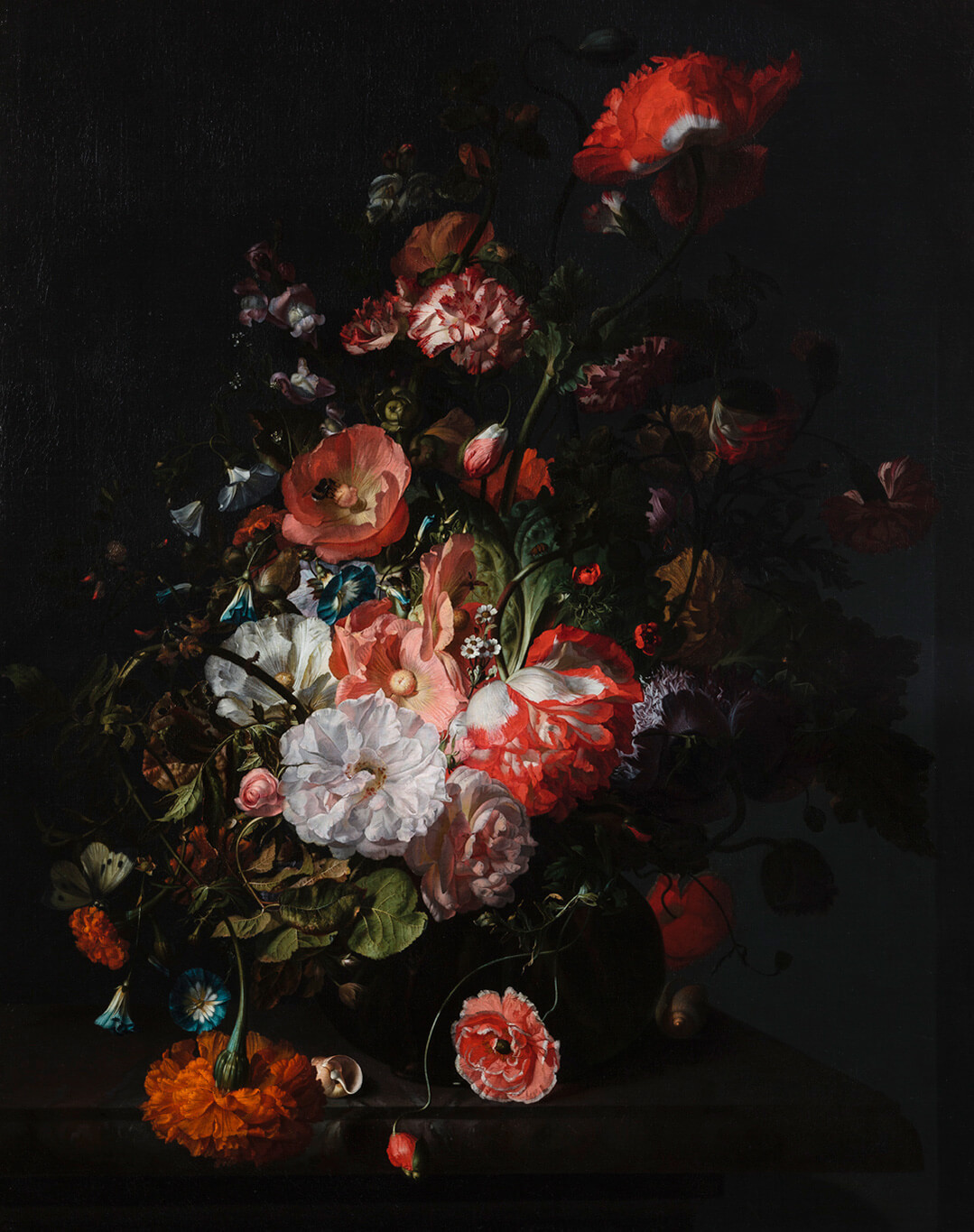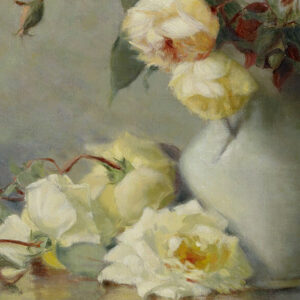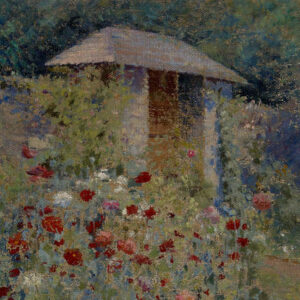Chrysanthemums: A Japanese Arrangement c.1895

Mary Hiester Reid, Chrysanthemums: A Japanese Arrangement, c.1895
Oil on canvas, 45.7 x 61 cm
Art Gallery of Ontario, Toronto
In this work, Hiester Reid depicts flowers in a blue-and-white Nanking porcelain vase pushed up to the forefront of the picture plane, as in the earlier painting Chrysanthemums, 1891. The work’s subject matter, composition, and title collectively signal Hiester Reid’s status as an “artist of her times,” as they showcase her awareness of the enthusiasm for paintings of artful blooms, as well as the influence of the Aesthetic movement and its interest in japonisme, a term popularized in the 1870s by French art critic and collector Philippe Burty (1830–1890).

Hiester Reid began to exhibit floral paintings in the Royal Canadian Academy of Arts and Ontario Society of Artists exhibitions in the mid-1880s. By the eighteenth century, European academies were establishing a hierarchy of paintings that classified highly realistic flower paintings as a subcategory of the still-life painting genre, the lowest ranked genre. Floral works, however, were extremely popular in the Dutch Republic during the seventeenth century, as the Dutch had become by this time the largest growers and exporters of flowers in Europe. Rachel Ruysch (1664–1750), who painted in this genre, lived and worked in Amsterdam, selling her works to a largely merchant clientele. She eventually became an internationally renowned practitioner of flower painting, working from 1708 to 1716 as court painter for Prince Johann Wilhelm in Düsseldorf, Germany. In the ensuing decades, however, botanical works became used primarily as teaching tools to illustrate and complement scientific studies documenting a plant’s stages of growth. It was not until the early to mid-nineteenth century that English art critic John Ruskin (1819–1900) called for artists to weave “high art ideals” together with “botanical accuracy.”
In the mid- to late nineteenth century, artists of the Aesthetic movement championed the concept of “art for art’s sake,” advocating that the primary pursuit of beauty could be incorporated in various forms of self-expression, from painting to fashion to interior design. One way that Western Aesthetic artists, such as American James Abbott McNeill Whistler (1834–1903), demonstrated their pursuit of beauty was to collect woodcut prints and ceramic art objects from Japan, display them in their homes, and then show these same objects in their own artworks. As art historian Ayako Ono explains, “The influence of Japanese art is a phenomenon called Japonisme, and it spread widely throughout western art. It is quite hard to make a clear definition of Japonisme because of the breadth of the phenomenon, but it could be generally agreed that it was an attempt to understand and adapt the essential qualities of Japanese art.”
Hiester Reid not only included Japanese objects in her work, as shown here and in A Fireside, 1912, but her unique interpretation of Aesthetic stylistic tendencies is evident in the rather effusive and broad brush strokes of flat colour, some coming together to form fused coloured sections that define the chrysanthemum petals. Such an approach differs greatly from the delicate, minute brushwork that the artist used to define the chrysanthemum petals in her 1891 work.

 About the Author
About the Author
 More Online Art Books
More Online Art Books
 Acknowledgements
Acknowledgements